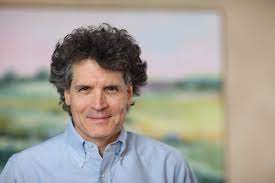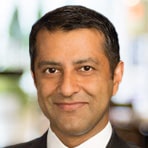Quant hedge fund hires mathematicians, physicists and computer scientists without financial backgrounds.
Peter Brown, chief executive of Renaissance Technologies, said the hedge fund that pioneered using quantitative strategies and predictive models for investing, hires mathematicians, physicists and computer scientists without a background in finance and without connections to Wall Street.
Raj Mahajan, global head, systematic client franchise, global banking & market at Goldman Sachs interviewed Brown on 27 July 2023 for the Goldman Sachs Exchanges: Great Investors podcast.
Brown explained that he had nothing to do with finance until he was 38 years one and began his career working on automatic speech recognition. At college he majored in math and physics and then studied artificial intelligence at graduate school at Carnegie Mellon where he was the first graduate student of Jeff Hinton, who has been dubbed the godfather of AI. After his PhD Brown went to work for IBM on speech recognition, machine translation, and the construction of large language models, which then had far less available data to analyse.
He admitted that he left IBM to join Renaissance Technologies with colleague Bob Mercer for purely financial reasons, as he had just had a daughter and founder Jim Simons offered to double his salary.
They rewrote the entire equities system and in 1996 they were put in charge of equities trading at Renaissance. At the end of 2002 they took over the rest of the technical side of the firm, which included currencies, bonds, options, and future trading. When Simons retired at the end of 2009 they became co-CEOs and Mercer stepped down at the start of 2018.
“When we arrived we found a half a dozen mathematicians who were very smart and very creative but they’d learned to program by reading the computer language models,” Brown added. “They had no idea how to build large systems so part of what we did was to introduce what was then considered modern computer science to Renaissance.”
 Peter Brown, Renaissance Technologies
Peter Brown, Renaissance Technologies
Brown continued that Renaissance hires mathematicians, physicists, computer scientists who have no background in finance and no connections with Wall Street. He explained that it is much easier to teach mathematicians about the markets than it is to teach mathematics and programming to people who know about the markets.
“The company was founded by scientists, is owned by scientists, run by scientists and we employ scientists,” he added. “Guess what, we take a scientific approach to investing and treat the entire problem as a giant problem in mathematics.”
Science is best done through collaboration so Renaissance constantly changes teams so people get to know others within the firm.
“We pay everyone from the same pot instead of paying different groups in accordance with how much money they’ve made for us,” said Brown.
Renaissance believes in providing the best infrastructure so that people can be as productive as possible and pays programmers “a ton” in accordance with the value the firm places on the value of their work.
As a result, Renaissance looks for math ability, programming ability, a love for data, work ethic and what Brown said was most important, the ability and desire to work in a collegial environment.
Another principle is not imposing any judgment on how the markets behave and putting a huge amount of effort into controlling risk.
Brown said: “There’s a danger that comes with success and to avoid this we try to remember that we know how to build large mathematical models and that is all we know. We don’t know any economics, don’t have any insights in the markets and just don’t interfere with our trading systems.”
During Brown’s time at Renaissance there have been spikes in volatility such as in 2000 when the dotcom bubble burst, the 2007 August quant quake, the 2008 financial crisis and the 2010 flash crash. In May 2010 the Dow Jones index suddenly dropped between 9% and 10% before recovering in 30 minutes.
Brown said that during the flash crash Renaissance saw trades being executed at absurd prices, but also noticed large delays in the price feeds so sat out for a little while waiting for sanity to return.
“For me, the most important takeaway from the flash crash was that exchanges needed to increase their capacity to handle spikes in volume and they have done this,” he added. “Since then, things have been better.“
Automation
After taking over in 2009 Brown said they discovered that many people were doing jobs that could be automated so Renaissance we set out on a massive campaign to automate back-office operations.
“13 years later we are not done yet,” he added. “I’m embarrassed to admit that we still have a few people who use Excel but was told recently that we’ve eliminated 97% of the spreadsheets that had originally been used in the company.”
Brown assumes the markets will become more automated with time.
“I am pleased to see the plan to go to one-day settlement but wish they would move to continuous settlement,” he added. “I’d love to see around the clock trading in all kinds of instruments, more securitization, tokenization, and more digital contracts.”

